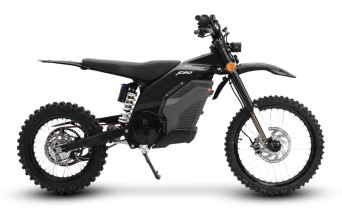Caofen Electric Motorcycle Carbon Footprint: Do They Pollute?
Introduction
Electric motorcycles are touted as the future of eco-friendly transportation, but do they deliver on this promise? Specifically, how does the Caofen Electric Motorcycle fare in terms of its carbon footprint? This article delves into the carbon emissions associated with electric motorcycles, focusing on the Caofen model to determine if they are as green as advertised.
Understanding Carbon Footprint
What is a Carbon Footprint?
A carbon footprint is the total amount of greenhouse gases (GHGs) emitted directly or indirectly by human activities, usually measured in equivalent tons of carbon dioxide (CO2e). It encompasses everything from the production and use of a product to its disposal.
How is it Measured?
Carbon footprints are calculated by assessing the GHG emissions from various stages of a product’s lifecycle, including raw material extraction, manufacturing, transportation, usage, and end-of-life disposal or recycling.

Electric Motorcycles: A Brief Overview
Rise of Electric Vehicles (EVs)
Electric vehicles have surged in popularity due to their potential to reduce emissions and dependency on fossil fuels. Motorcycles, a significant part of the personal transportation sector, follow this trend with various electric models entering the market.
Benefits of Electric Motorcycles
Electric motorcycles offer numerous advantages:
- Reduced emissions during operation
- Lower noise pollution
- Decreased maintenance costs due to fewer moving parts
- Independence from fluctuating fuel prices
Comparison with Traditional Motorcycles
Traditional motorcycles, powered by internal combustion engines, emit considerable amounts of CO2 and other pollutants. Electric motorcycles, on the other hand, have zero tailpipe emissions, making them an attractive alternative.

The Caofen Electric Motorcycle
Features and Specifications
The Caofen Electric Motorcycle boasts impressive features such as high efficiency, long battery life, and sleek design. It’s equipped with cutting-edge technology to enhance performance and rider experience. The Caofen has a one-piece zero-welded aluminum magnesium lightweight frame. The frame is strong and can stay intact even after being dropped from a height of 50 meters.
Technological Innovations
Caofen integrates advanced battery management systems, regenerative braking, and smart connectivity features that set it apart from competitors. The battery for Caofen has a liquid cooling system and an auxiliary heating system. As for the brakes, the road version offers a CBS braking system, and the off-road offers an independent braking system
Environmental Impact of Electric Motorcycles
Manufacturing Process
The production of electric motorcycles involves energy-intensive processes and the use of raw materials like lithium, cobalt, and nickel, which have significant environmental impacts.
Battery Production and Disposal
Battery production is a critical factor in the overall carbon footprint. Mining and refining of battery materials are energy-intensive and often involve environmentally harmful practices. Disposal and recycling of batteries also pose challenges due to toxic components.
Energy Consumption and Emissions
While electric motorcycles do not emit pollutants during operation, their carbon footprint depends on the source of electricity used for charging. Renewable energy sources minimize emissions, whereas coal-powered electricity increases the carbon footprint.
Carbon Footprint Analysis of Caofen Electric Motorcycle
Production Phase
The production phase includes the extraction and processing of raw materials, manufacturing of components, and assembly. This stage is often the most carbon-intensive.
Usage Phase
During the usage phase, the primary emissions come from electricity consumption for charging. The carbon footprint here varies significantly based on the energy mix of the region.
End-of-Life Phase
The end-of-life phase involves the disposal or recycling of the motorcycle and its components. Efficient recycling processes can mitigate environmental impacts.

Comparing Carbon Footprints: Electric vs. Traditional Motorcycles
Lifecycle Emissions
Electric motorcycles generally have lower lifecycle emissions compared to traditional motorcycles, primarily due to the absence of tailpipe emissions.
Operational Emissions
Traditional motorcycles emit CO2 and other pollutants during operation, whereas electric motorcycles produce no direct emissions.
Long-term Environmental Benefits
Over time, the environmental benefits of electric motorcycles outweigh the initial manufacturing impacts, especially as renewable energy sources become more prevalent.
Battery Technology and Environmental Considerations
Types of Batteries Used
Most electric motorcycles, including Caofen, use lithium-ion batteries, known for their high energy density and efficiency.
Impact of Lithium-Ion Batteries
Lithium-ion batteries have a significant environmental impact due to the extraction and processing of raw materials. Efforts are ongoing to develop more sustainable battery technologies.
Recycling and Disposal Challenges
Recycling lithium-ion batteries is complex and costly, but essential to reducing environmental harm and recovering valuable materials.
Sustainable Practices in Electric Motorcycle Manufacturing
Eco-friendly Materials
Manufacturers are increasingly using recycled and eco-friendly materials to reduce environmental impact.
Energy-efficient Manufacturing Processes
Adopting energy-efficient manufacturing processes helps lower the carbon footprint of electric motorcycles.
Corporate Sustainability Initiatives
Companies like Caofen are implementing sustainability initiatives, including carbon offset programs and green energy usage, to minimize their environmental impact.
Government Regulations and Support
Policies Promoting Electric Vehicles
Governments worldwide are enacting policies to promote the adoption of electric vehicles, including tax incentives, subsidies, and grants.
Subsidies and Incentives
Subsidies and incentives can significantly reduce the cost of electric motorcycles, making them more accessible to consumers.
Future Prospects
The future looks promising for electric motorcycles, with ongoing advancements in technology and increasing government support.
Consumer Responsibility and Choices
Eco-conscious Riding Habits
Riders can reduce their carbon footprint by adopting eco-conscious habits, such as avoiding rapid acceleration and maintaining steady speeds.
Importance of Regular Maintenance
Regular maintenance ensures the motorcycle operates efficiently, reducing energy consumption and emissions.
Disposal and Recycling
Proper disposal and recycling of electric motorcycles and their batteries are crucial to minimizing environmental impact.
The Future of Electric Motorcycles
Technological Advancements
Ongoing advancements in battery technology, materials science, and manufacturing processes will continue to improve the sustainability of electric motorcycles.
Market Trends
The electric motorcycle market is expected to grow rapidly, driven by consumer demand and regulatory support.
Potential Challenges
Challenges include battery disposal, raw material sourcing, and a stable supply of renewable energy for charging.
Conclusion
The Caofen Electric Motorcycle represents a significant step forward in reducing transportation emissions. While not entirely free from environmental impact, its overall carbon footprint is substantially lower than traditional motorcycles. By advancing technology and adopting sustainable practices, electric motorcycles can become even more eco-friendly, contributing to a greener future.

Waterproof Electric Motorcycles: Caofen F80
Explore the waterproof capabilities of electric motorcycles, focusing on the Caofen F80 with its IP67 rating.
Mar 05 2025
Top Electric Motorcycles 2025
Discover the best electric motorcycles of 2025, from Caofen FX to SurRon and Harley-Davidson.
Feb 27 2025
